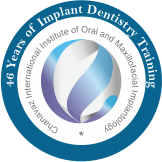Chemicals
All in all, 20 natural phenolic acids and you may derivatives (Dining table An effective in the S1 File) have been ordered out-of Aladdin Industrial Inc. Such ingredients include sixteen sheer phenolic acids, which have two identifying constitutive carbon dioxide tissues: COOH and C = CCOOH, and 4 compounds also known as phenolic acid derivatives, which have good COOR framework, including propyl gallate (01), methyl gallate (09), methyl vanillate (15), and ferulic acidic ethyl ester (18).
DPPH significant scavenging assay
The new DPPH assay has been widely used to the measurement from free significant scavenging capabilities of various natural basic products [fifteen,16]. The latest DPPH major is actually a reliable normal totally free radical which have adsorption ring within 515–528 nm. It will lose which adsorption when recognizing a keen electron or a totally free radical varieties, which leads to a visually apparent discoloration away from reddish to help you red-colored . The fresh DPPH radical scavenging assay is mentioned using the method of Sunrays and you may Ho . Temporarily, dos mL DPPH service (0.dos mmol/L, into the ethanol) try incubated with assorted concentrations of one’s try. The newest response mix is shaken and you can incubated at nighttime getting 29 min during the room-temperature. The brand new absorbance is actually realize in the 517 nm facing ethanol. The brand new handle which has had ethanol rather than the decide to try additionally the empty which has ethanol in the place of DPPH services had been and additionally produced. The test try run-in triplicate in addition to suppression of DPPH radical of your attempt was determined according to the following formula:
The percentage of DPPH radical scavenging activity was plotted against the sample concentration to acquire the ICfifty value, defined as the concentration of sample necessary to cause 50% inhibition. The DPPH measurements were assayed using a spectrophotometer (UNICO7200, Unico(Shanghai) Instrument Co., Ltd.).
DFT data
All geometries was indeed completely enhanced throughout inner amounts of liberty having fun with DFT computations to your B3LYP useful and 6-311++G(d,p) foundation set. For everybody of your radical assistance, the new open-ended B3LYP/6-311++G(d,p) method was applied. Vibrational frequencies had been subsequent computed in one height to be certain no imaginary frequency towards optimized formations. To have discover-shell variety, reliability of your time review try sensitive to twist contamination. Here, spin contaminations regarding radicals was based in the 0.76–0.78 variety, then twist toxic contamination dropped so you’re able to a correct worth of 0.75 pursuing the annihilation of one’s basic spin contaminant.
Right here, BDE, Internet protocol address, PDE, PA and you can ETE was calculated in the fuel phase, benzene, h2o and you will ethanol solvents in the 298 K according to the adopting the terms (Eq 7, 8, nine, 10 and eleven):
Therein, the BDE viewpoints were utilized to estimate the latest reactivity of an ArOH in the Hat. The brand new Internet protocol address and you can PDE opinions about ArOH •+ significant cation had been calculated to spell it out the new SETPT procedure. The fresh PA viewpoints of your phenoxide anion, ArO ? , were utilized to define the reaction enthalpy of your own 1st step, and ETEs towards impulse enthalpy of one’s pursuing the action, regarding SPLET process.
New solvent outcomes were computed having fun with a key picture formalism polarized continuum model IEF-PCM approach . Brand new calculated gas-stage enthalpy out-of a beneficial proton and you may an enthusiastic electron was 1.483 and you will 0.752 kcal/mol, respectively . Proton and you may electron solvation enthalpies have been extracted from Rimarcik mais aussi al.is why statement , and you can hydrogen atom solvation enthalpies from Parker’s and you may Bizarro et al’s report . All data had been did having fun with Gaussian 09 .
QSAR modeling and you will recognition
Simple or multiple linear regression analysis (SLR or MLR) was performed to derive the QSAR models. The BDE, IP, PDE, PA and ETE descriptors were regarded as inputs of the models, and the negative logarithmic IC50 values (pIC50) were treated as dependent variables. The BDE-antioxidant activity relationships were described by SLR-based QSAR models, while the IP-PDE-antioxidant activity and the online STD Sites dating PA-ETE-antioxidant activity relationships were described by MLR-based models. The leave-one-out cross validation was employed to test the predictive ability of the models. The modeling performance was assessed based on a serial of statistical parameters, including multiple correlation coefficients (R 2 for regression modeling and Q 2 for leave-one-out cross validation), standard error, and Fisher’s criterion, etc. The linear regression operation and the leave-one-out cross validation was performed by our in-house applied program.
